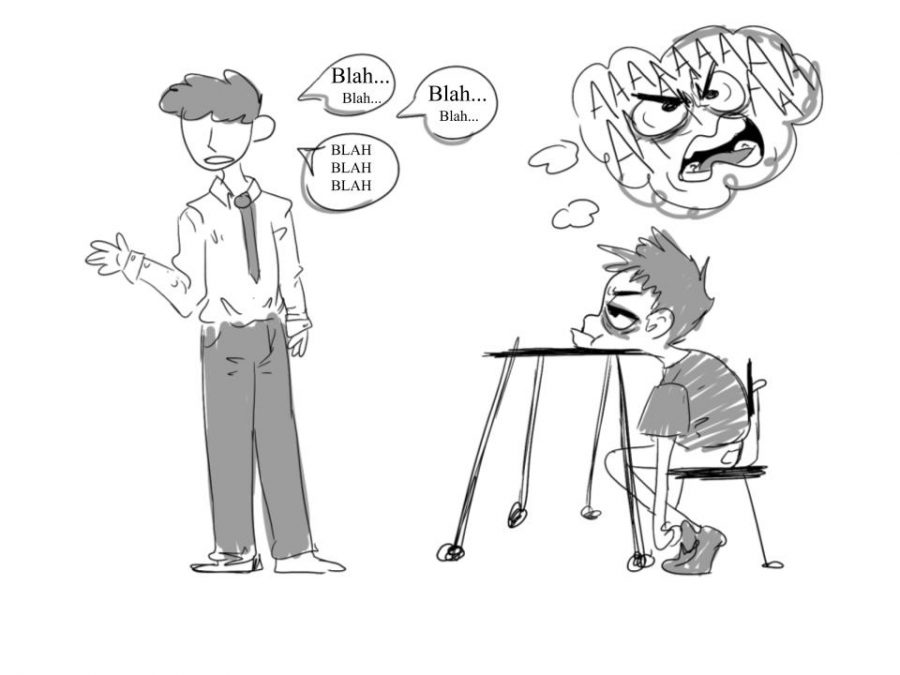Lecturing needs to be revamped
Teachers must find new, engaging ways to teach students
January 22, 2020
It’s first period on a Tuesday after a long weekend; the bell rings and your teacher power’s up a PowerPoint and says “pull out your notebooks.” The class groans as they comply, preparing themselves for another boring double period. When I have doubles that are entirely lecturing, I get very bored about halfway through the hour and a half period.
The number one problem with lecturing is it fails to make students excited to learn, which is what a school’s purpose should be.
Many studies have been done proving that active learning increases student performance. According to the University of Minnesota Center for Educational Innovation, active learning is “any approach to instruction in which all students are asked to engage in the learning process.”
Lecturing can cause students to zone out or fall asleep, therefore making them miss important content. This problem can be combated by teachers by adding active experiences to lectures.
In his book, “Brain Rules,” molecular biologist John Medina found that a “subjective report of attention” dropped significantly after ten minutes of lecturing to adolescents.
For this reason, in a Derek Bok Center documentary called “Thinking Together: Collaborative Learning In the Sciences,” Harvard University recommends a different approach to having an effective lecture. The documentary recommends that teachers break up lectures into 10-minute sections, with a three to five-minute interactive activity between each section. This activity could be anything from a brief conversation about the content to a group project.
If teachers followed this format, students would get much more out of lectures and they would have to remain attentive in order to do well during the active breaks.
In addition, by allowing only minimal use of notes during these active learning breaks, teachers can further increase the students’ attention level. This will force students to pay attention during the lecture time and not mindlessly take notes.
Group work can foster more “real life” skills while still applying the curriculum. It teaches students how to interact with others, especially in the middle school years. It also gives the students the opportunity to practice problem-solving skills, an attribute that many companies are saying students have been lacking recently.
While lecturing is the quickest way to teach and easiest for the instructor, teachers should add in active learning to their lessons in order to maintain the focus and engagement of their students.











